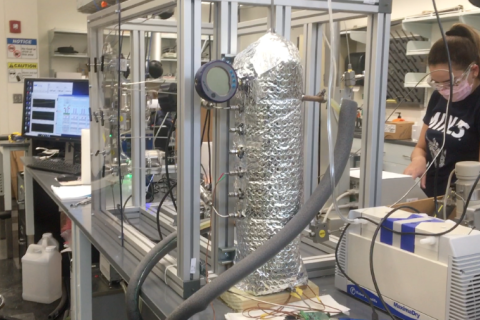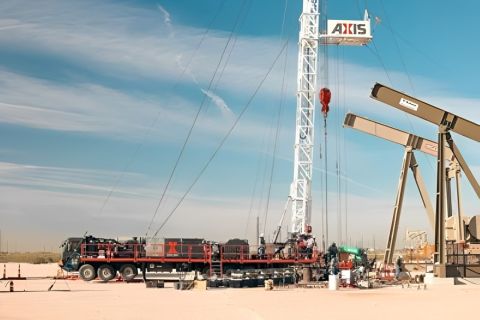As with all plays, low commodity prices in 2015 prompted change in the Eagle Ford Shale. E&Ps reduced rig counts and capital spending, and ceased activity in all but the core areas of the play. The reversal of prices in late 2016 prompted operators to put rigs back to work, thereby arresting declining production and setting the stage for growth in 2017 and 2018. Turning to the future, Stratas projects robust activity and relatively stable production.
While the Eagle Ford boasts some of the best economics in North America, large swaths of the play are now densely drilled, a feature often associated with mature plays. To be sure, the Eagle Ford is aging, and aging well at that. Even after years of aggressive drilling, the play has a large inventory of high-quality drilling locations. Stratas estimates a majority of Eagle Ford wells will enjoy breakeven economics below $50 per barrel West Texas Intermediate.
In 2015, the downturn in oil prices led operators in the Eagle Ford to reassess their competitive positions, leading many to reconsider the way they operate. New technologies and process improvements were tried, with some being implemented, some not. Changes made were necessary to remain competitive in both the short and long term.
Efforts to reduce costs initially focused on drilling efficiencies, which is nothing new. The equation really is quite simple: increase rates of penetration (ROP) and control costs. Unfortunately, focusing solely on ROP often compromised wellbore quality, which often compromised the completion and overall well productivity. In time, wellbore quality improved. Reductions in severe doglegs, thereby allowing for larger and better completions, and ultimately better performing wells ensued.
With drilling operations optimized, companies shifted their attention to completions, starting with proppant. While the community, at times, still debates the merits of “Northern White” vs. “Brady Brown” sands, no one debates the contribution of proppant transportation cost. Reductions in long-haul transportation have dramatically impacted the delivered cost of proppant.
Beyond proppant, completions efficiency has been enhanced through wider adoption of zipper fracks. Zipper fracks enable crews to reduce downtime during the completion process by allowing them to toggle resources and activity between two wells in a single operation, thus increasing equipment utilization. Recent trends point to larger pads with greater numbers of wells on which to apply the zipper approach. Unfortunately, additional upside will be difficult to capture as little downtime remains in completion operations.
Lateral lengths have grown ever longer in recent years. The average lateral length in the Eagle Ford has grown from approximately 5,700 feet in 2016 to nearly 7,000 feet today. Lesser performing areas in the play have seen lateral lengths approach 8,000 feet. Increasingly, longer laterals and higher stage counts per well will drive proppant volumes materially higher.
Traditionally, oilfield chemical products were distributed to the major oilfield service companies, and hence, the big box service providers were major gatekeepers for these products. A decoupling of sorts occurred in recent years as E&Ps looked deeper into procurement to continue driving down costs. Today, a greater number of materials (surfactants, biocides, inhibitors, etc.) used at wellsites are increasingly purchased directly. Adding momentum to the in-sourcing movement is the increasing preferences for more environmentally green solutions. In-sourcing and backward vertical integration are becoming the norm and are here for the long term.
The Eagle Ford dips from the northwest at depths of approximately 4,000 feet to the southeast where depths approach 18,000 feet. Generally, the play is bounded by the Ouachita Fold Belt to the north, the San Marcos Arch to the east and the Sligo Reef to the south.
Well performance tends to be stronger closer to the Edwards Trend within the bounded area. Understanding reservoir thickness, thermal maturity and fracking potential is key to optimal well performance. The best areas typically have thicknesses of 100 to 200 feet.
Moving east, the Eagle Ford thickness thins quickly, leaving less productive zones in both the oil and gas windows. Thicker zones in the west tend to have higher thermal maturity, leading to gassier production. The thickness contributes to relatively strong flow rates in Maverick County, Texas. However, persistently low gas prices limit economics in the area. Thermal maturity in the Eagle Ford generally follows the play’s structure. Shallower areas are oil prone and immature, whereas deeper areas are gas prone and over mature.
After more than a decade on the scene, the Eagle Ford still presents one of the most compelling opportunities in North America. Breakeven economics are strong, the runway is long and costs are well-maintained.
Liquids production will continue to lead activity and production volumes. However, associated gas volumes will also remain strong. In contrast, dry gas areas of the Eagle Ford remain unattractive and will remain challenged in a sub-$4 per million British thermal unit environment.
Recommended Reading
AI Poised to Break Out of its Oilfield Niche
2024-04-11 - At the AI in Oil & Gas Conference in Houston, experts talked up the benefits artificial intelligence can provide to the downstream, midstream and upstream sectors, while assuring the audience humans will still run the show.
Going with the Flow: Universities, Operators Team on Flow Assurance Research
2024-03-05 - From Icy Waterfloods to Gas Lift Slugs, operators and researchers at Texas Tech University and the Colorado School of Mines are finding ways to optimize flow assurance, reduce costs and improve wells.
Defeating the ‘Four Horseman’ of Flow Assurance
2024-04-18 - Service companies combine processes and techniques to mitigate the impact of paraffin, asphaltenes, hydrates and scale on production — and keep the cash flowing.
Axis Energy Deploys Fully Electric Well Service Rig
2024-03-13 - Axis Energy Services’ EPIC RIG has the ability to run on grid power for reduced emissions and increased fuel flexibility.
StimStixx, Hunting Titan Partner on Well Perforation, Acidizing
2024-02-07 - The strategic partnership between StimStixx Technologies and Hunting Titan will increase well treatments and reduce costs, the companies said.





